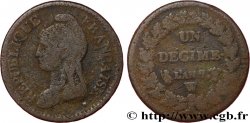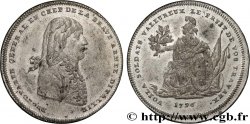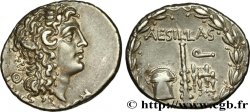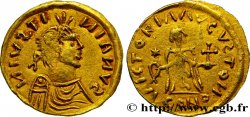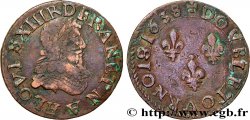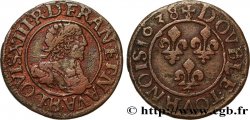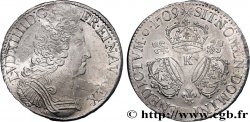Live auction - fme_725119 - DIRECTOIRE Médaille, Conseil des Cinq-Cents
You must signin and be an approved bidder to bid, LOGIN TO BID. Accounts are subject to approval and the approval process takes place within 48 hours. Do not wait until the day a sale closes to register. Clicking on "BID" constitutes acceptance of the terms of use of cgb.fr private live auctions.
Bids must be placed in whole Euro amounts only. The sale will start closing at the time stated on the item description; any bids received at the site after the closing time will not be executed. Transmission times may vary and bids could be rejected if you wait until the last second. For further information check the Live auction FAQ
All winning bids are subject to a 18% buyer’s fee.
All winning bids are subject to a 18% buyer’s fee.
| Estimate : | 400 € |
| Price : | 260 € |
| Maximum bid : | 320 € |
| End of the sale : | 08 March 2022 18:54:30 |
| bidders : | 3 bidders |
Type : Médaille, Conseil des Cinq-Cents
Date: 1799
Metal : silver
Diameter : 56,5 mm
Orientation dies : 12 h.
Weight : 64,39 g.
Edge : lisse
Puncheon : sans poinçon
Coments on the condition:
Patine grise hétérogène, des traces de nettoyage et de légers frottements dans les champs. Présence de quelques coups et rayures. Traces d’une monture sur la tranche à 12 heures
Obverse
Obverse legend : REPUBLIQUE - FRANÇAISE // REPRESENTANT / DU PEUPLE / L’AN VII.
Obverse description : Faisceau coiffé d’un bonnet phrygien, accosté de branches de laurier et de chêne, cornes d’abondance au pied du faisceau.
Reverse
Reverse legend : CONSEIL DES CINQ-CENTS // CONSTITUTION / DE / L'AN TROIS.
Reverse description : Ourobouros entourant les tables de lois posée sur un niveau. Nom du récipiendaire à l’exergue.
Commentary
Cette médaille est réalisée par Nicolas Marie Gatteaux (1751-1832). Elle était remise à chaque membre du conseil pour la session de l'an 7. Exemplaire non décerné.
Le Conseil des Cinq-Cents, “chambre basse”, était l'une des deux Assemblées du Directoire. Composé de 500 députés comme son nom l'indique, le Conseil était élu au suffrage censitaire à deux tours, conformément à la Constitution de l'An III, chacun devait être âgé de plus de 30 ans et résidant depuis au moins dix ans sur le territoire national. Les citoyens de chaque canton, hommes majeurs de vingt et un ans, payant une contribution directe ou justifiant de services militaires actifs dans l'armée et résidant en France depuis au moins un an, se réunissaient en assemblées primaires afin de désigner un « grand électeur » pour 200 habitants. Le Conseil avait l'initiative des projets de Loi soumis ensuite au Conseil des Anciens, “chambre haute”. Ses députés dressaient la liste où le Conseil des Anciens devait choisir les Directeurs. Après les élections de l'An V, la majorité thermidorienne disparut. L'Assemblée fut renversée et dissoute par le Coup d'État de Bonaparte le 18 brumaire An 8 (9 novembre 1799).
This medal was made by Nicolas Marie Gatteaux (1751-1832). It was given to each member of the council for the year 7 session. Unawarded example.
The Council of Five Hundred, the “lower house,” was one of the two Assemblies of the Directory. Composed of 500 deputies as its name indicates, the Council was elected by census suffrage in two rounds, in accordance with the Constitution of Year III, each had to be over 30 years old and resident for at least ten years on the national territory. The citizens of each canton, men of legal age twenty-one, paying a direct contribution or having active military service in the army and residing in France for at least one year, met in primary assemblies to designate a \\\"grand elector\\\" for every 200 inhabitants.. The Council had the initiative for draft laws which were then submitted to the Council of Elders, the “upper house”.. His deputies drew up the list from which the Council of Elders was to choose the Directors.. After the elections of Year V, the Thermidorian majority disappeared. The Assembly was overthrown and dissolved by Bonaparte's coup d'état on 18 Brumaire Year 8 (November 9, 1799)
Le Conseil des Cinq-Cents, “chambre basse”, était l'une des deux Assemblées du Directoire. Composé de 500 députés comme son nom l'indique, le Conseil était élu au suffrage censitaire à deux tours, conformément à la Constitution de l'An III, chacun devait être âgé de plus de 30 ans et résidant depuis au moins dix ans sur le territoire national. Les citoyens de chaque canton, hommes majeurs de vingt et un ans, payant une contribution directe ou justifiant de services militaires actifs dans l'armée et résidant en France depuis au moins un an, se réunissaient en assemblées primaires afin de désigner un « grand électeur » pour 200 habitants. Le Conseil avait l'initiative des projets de Loi soumis ensuite au Conseil des Anciens, “chambre haute”. Ses députés dressaient la liste où le Conseil des Anciens devait choisir les Directeurs. Après les élections de l'An V, la majorité thermidorienne disparut. L'Assemblée fut renversée et dissoute par le Coup d'État de Bonaparte le 18 brumaire An 8 (9 novembre 1799).
This medal was made by Nicolas Marie Gatteaux (1751-1832). It was given to each member of the council for the year 7 session. Unawarded example.
The Council of Five Hundred, the “lower house,” was one of the two Assemblies of the Directory. Composed of 500 deputies as its name indicates, the Council was elected by census suffrage in two rounds, in accordance with the Constitution of Year III, each had to be over 30 years old and resident for at least ten years on the national territory. The citizens of each canton, men of legal age twenty-one, paying a direct contribution or having active military service in the army and residing in France for at least one year, met in primary assemblies to designate a \\\"grand elector\\\" for every 200 inhabitants.. The Council had the initiative for draft laws which were then submitted to the Council of Elders, the “upper house”.. His deputies drew up the list from which the Council of Elders was to choose the Directors.. After the elections of Year V, the Thermidorian majority disappeared. The Assembly was overthrown and dissolved by Bonaparte's coup d'état on 18 Brumaire Year 8 (November 9, 1799)







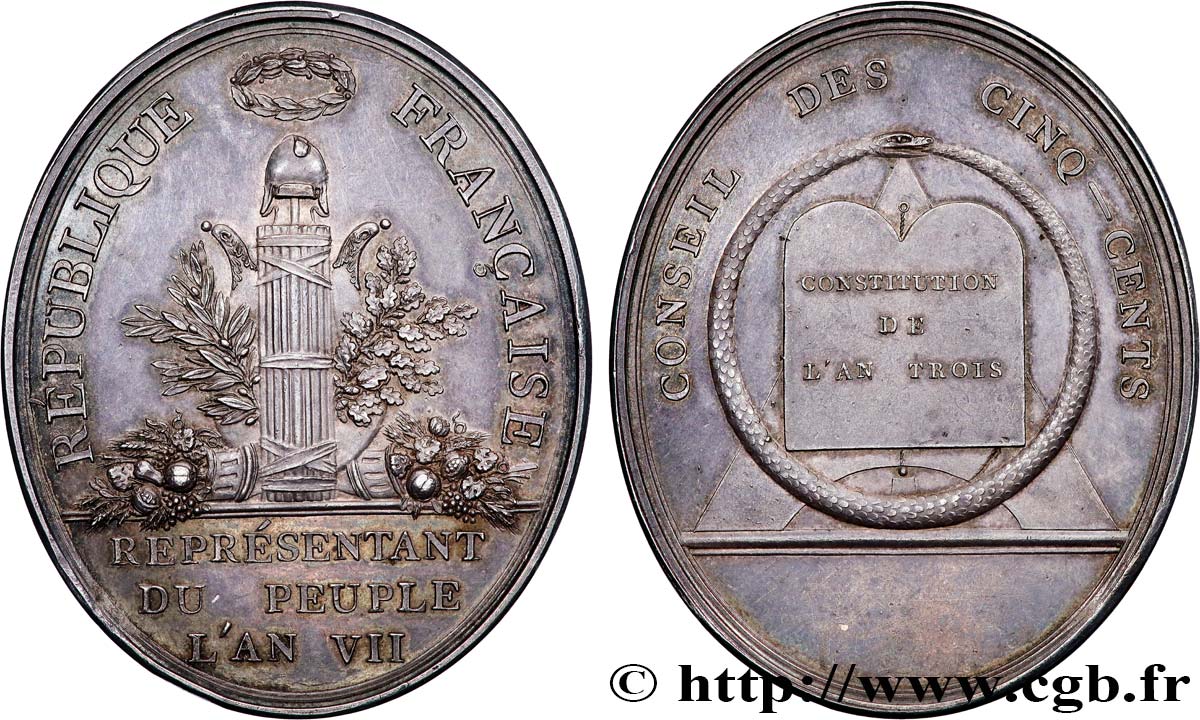
 Report a mistake
Report a mistake Print the page
Print the page Share my selection
Share my selection Ask a question
Ask a question Consign / sell
Consign / sell
 Full data
Full data